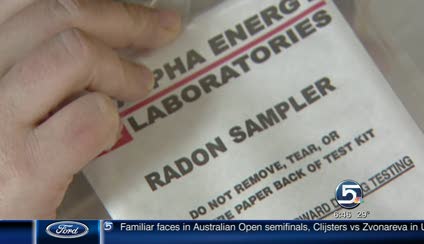Estimated read time: 2-3 minutes
This archived news story is available only for your personal, non-commercial use. Information in the story may be outdated or superseded by additional information. Reading or replaying the story in its archived form does not constitute a republication of the story.
SALT LAKE CITY -- Governor Gary Herbert has declared January Radon Action Month. Radon is a radioactive colorless and odorless gas that can seep into your home and have deadly consequences.
Source: EPA
Christine Keyser, the radon program coordinator for the Department of Environment Quality, said radon can seep into homes and get trapped inside.
The U.S. Surgeon General has warned that radon is the second leading cause of lung cancer in the United States after smoking. The EPA estimates radon causes about 21,000 lung cancer deaths per year.
According to the Division of Radiation Control, approximately 30 percent of homes in Utah have an elevated radon level. Unfortunately, many Utahns have not tested their home for radon. Also, many children in Utah sleep in basements, where radon levels can be the highest.
Radon levels
| 1.3 | Average concentration |
| 2.7 | WHO recommends action |
| 4.0 | EPA recommends action |
The state has made it easy and inexpensive for homeowners to test their homes. Utahns can order a do-it-yourself radon test kit for a discounted price of $6 (including the laboratory analysis) by going to radon.utah.gov. The state says this is the best time of year to test because radon levels are higher in the winter.
The Division of Radiation Control warns there is no safe level of radon. But here are some numbers to keep in mind: A level of 1.3 is the average concentration for indoor radon. The World Health Organization recommends taking action to remediate radon at levels of 2.7 and above, while the EPA recommends action at 4.0 and above.
Elevated levels of radon can be easily remedied. Numerous radon professionals can help to fix the problem.
The group Cancer Survivors Against Radon will hold rallies today in five states, including Utah, to raise awareness of the dangers of radon. That will happen on the steps of the state Capitol at noon.









